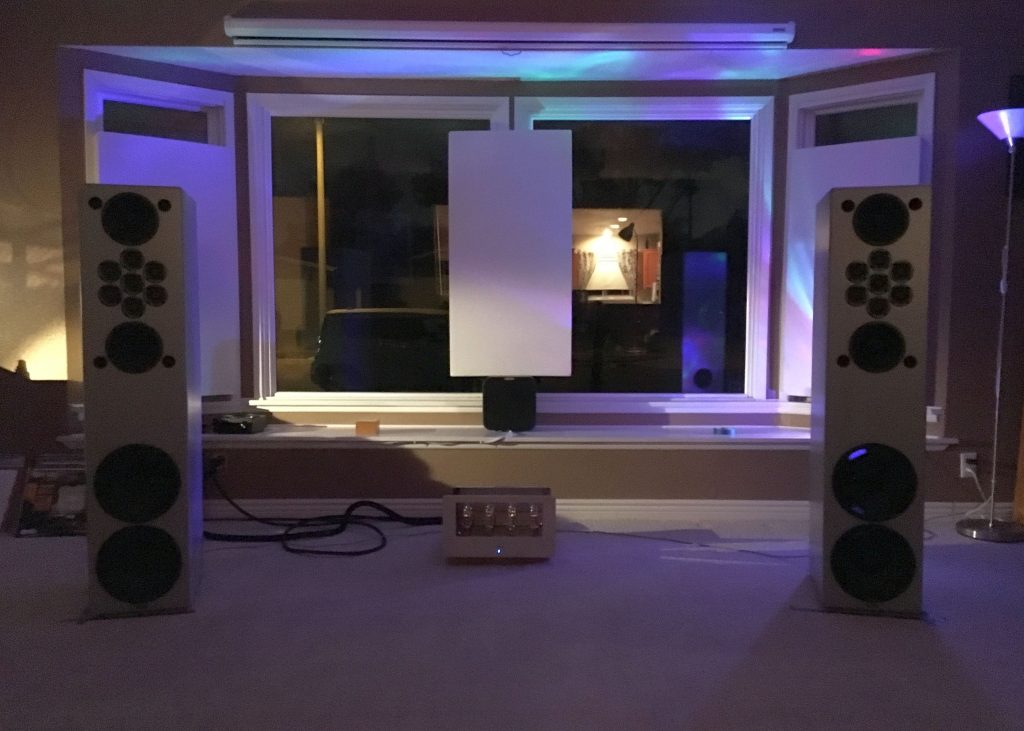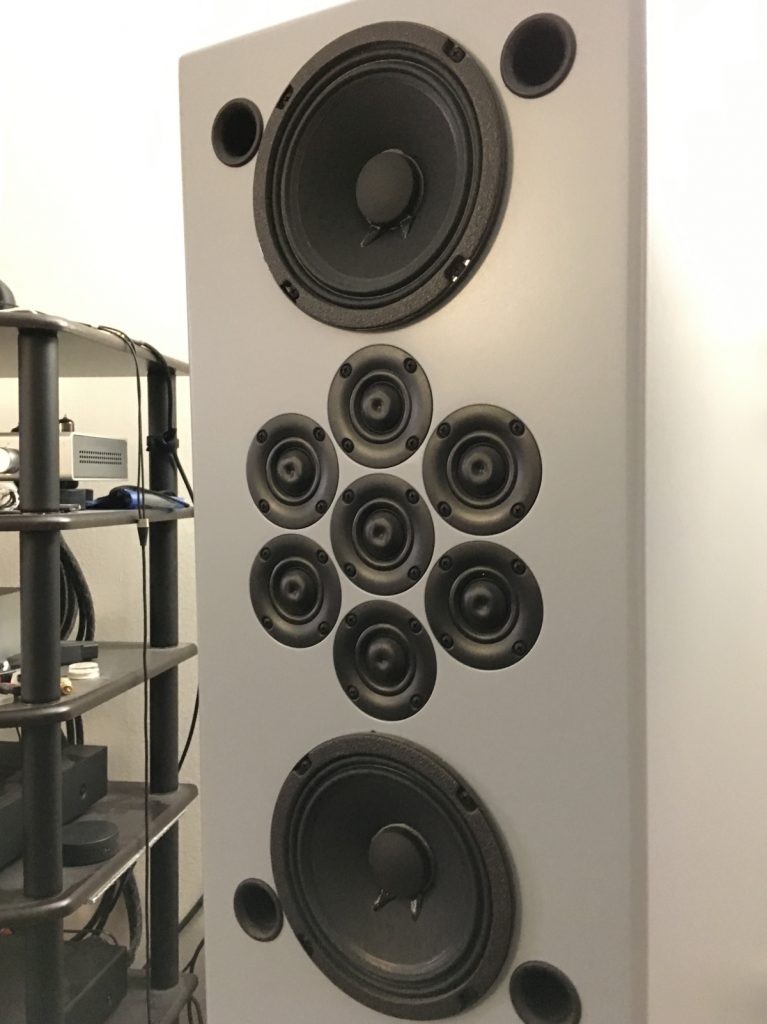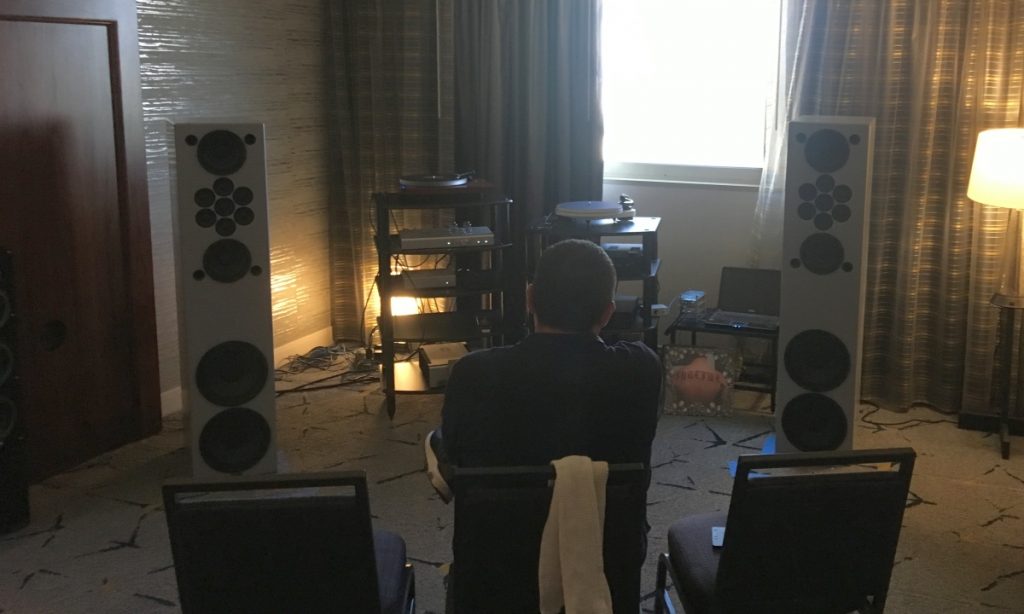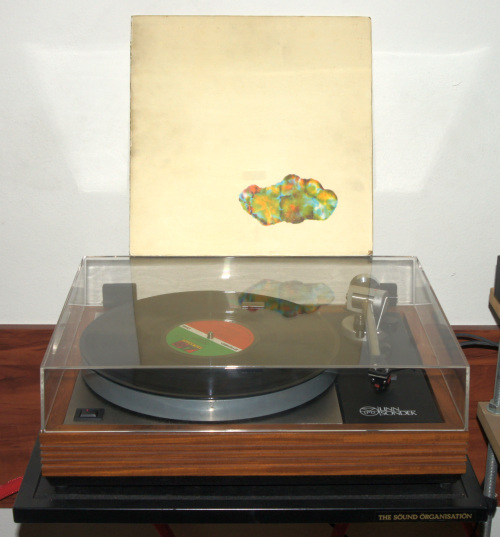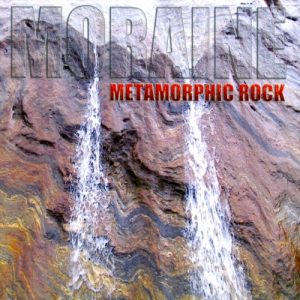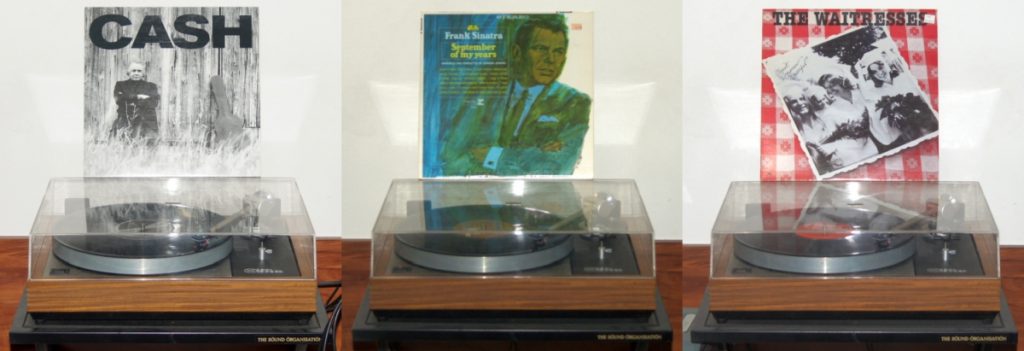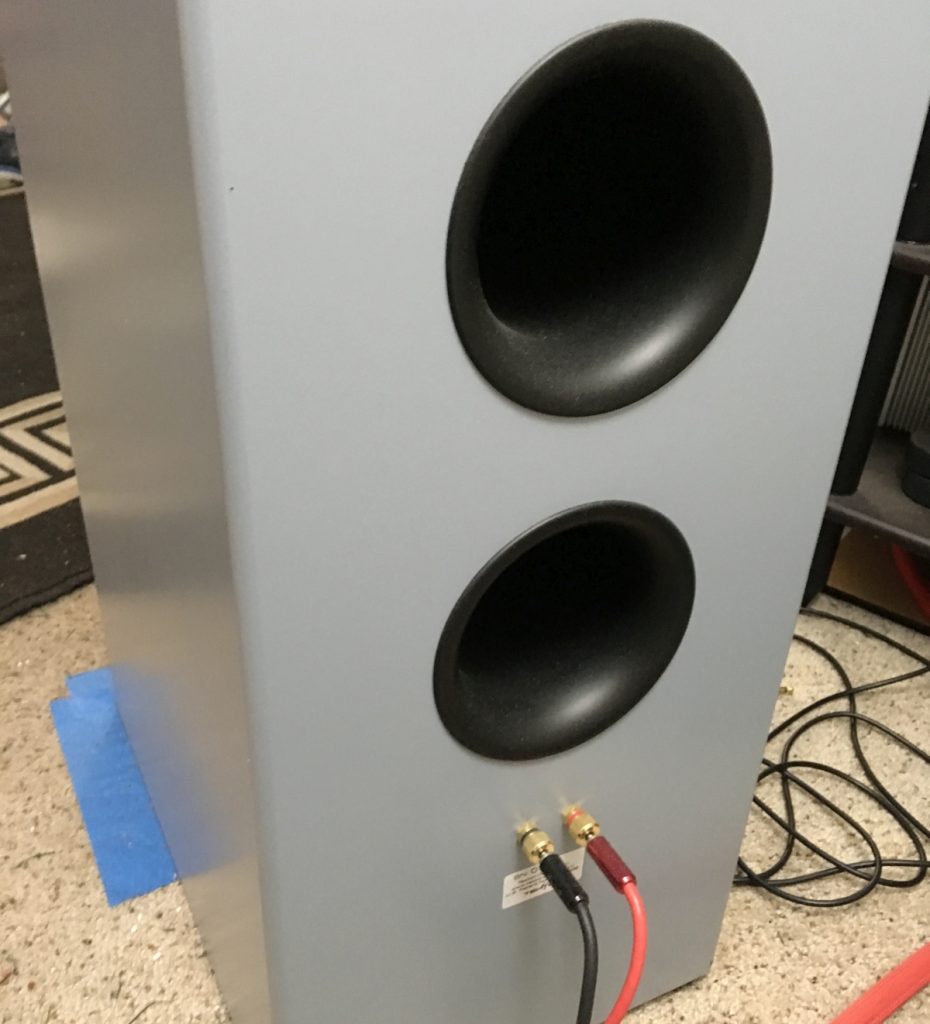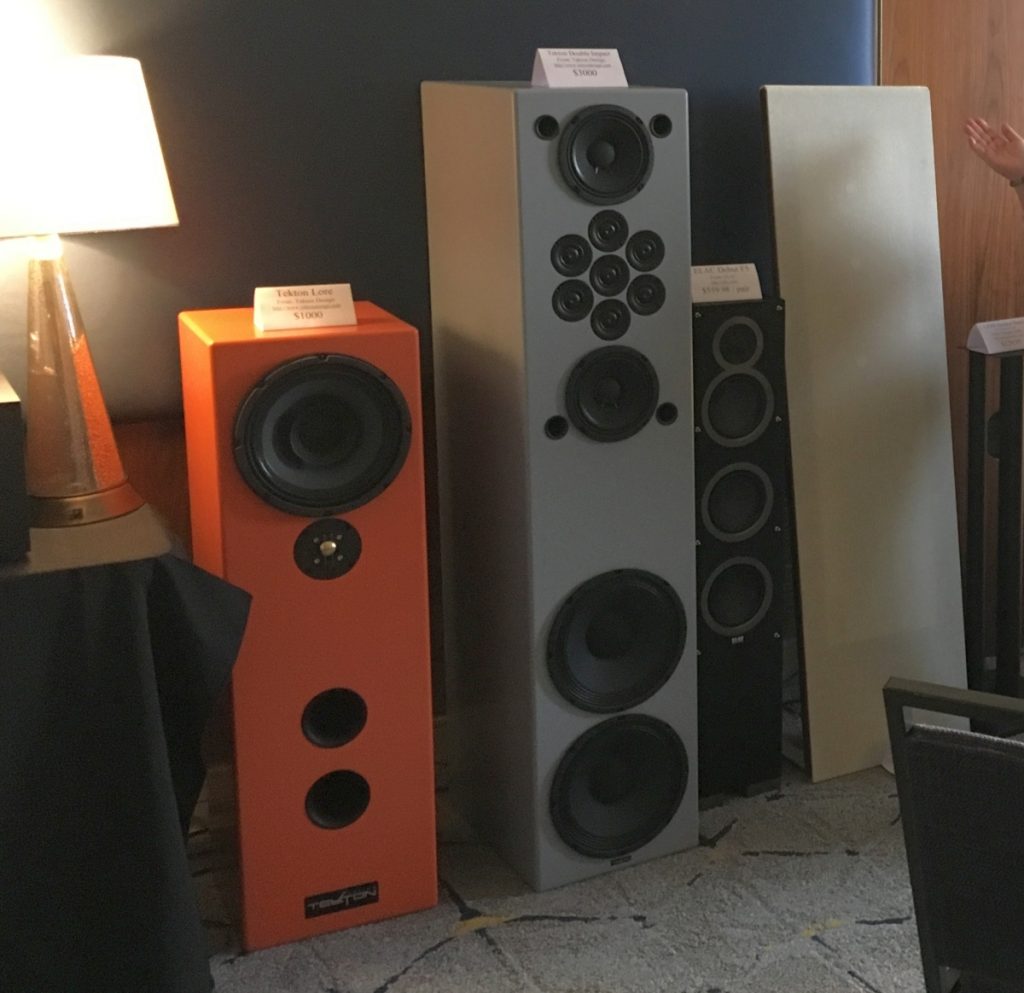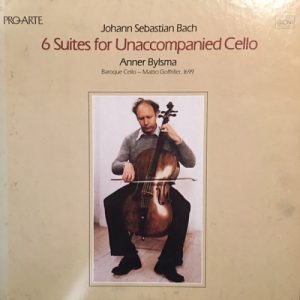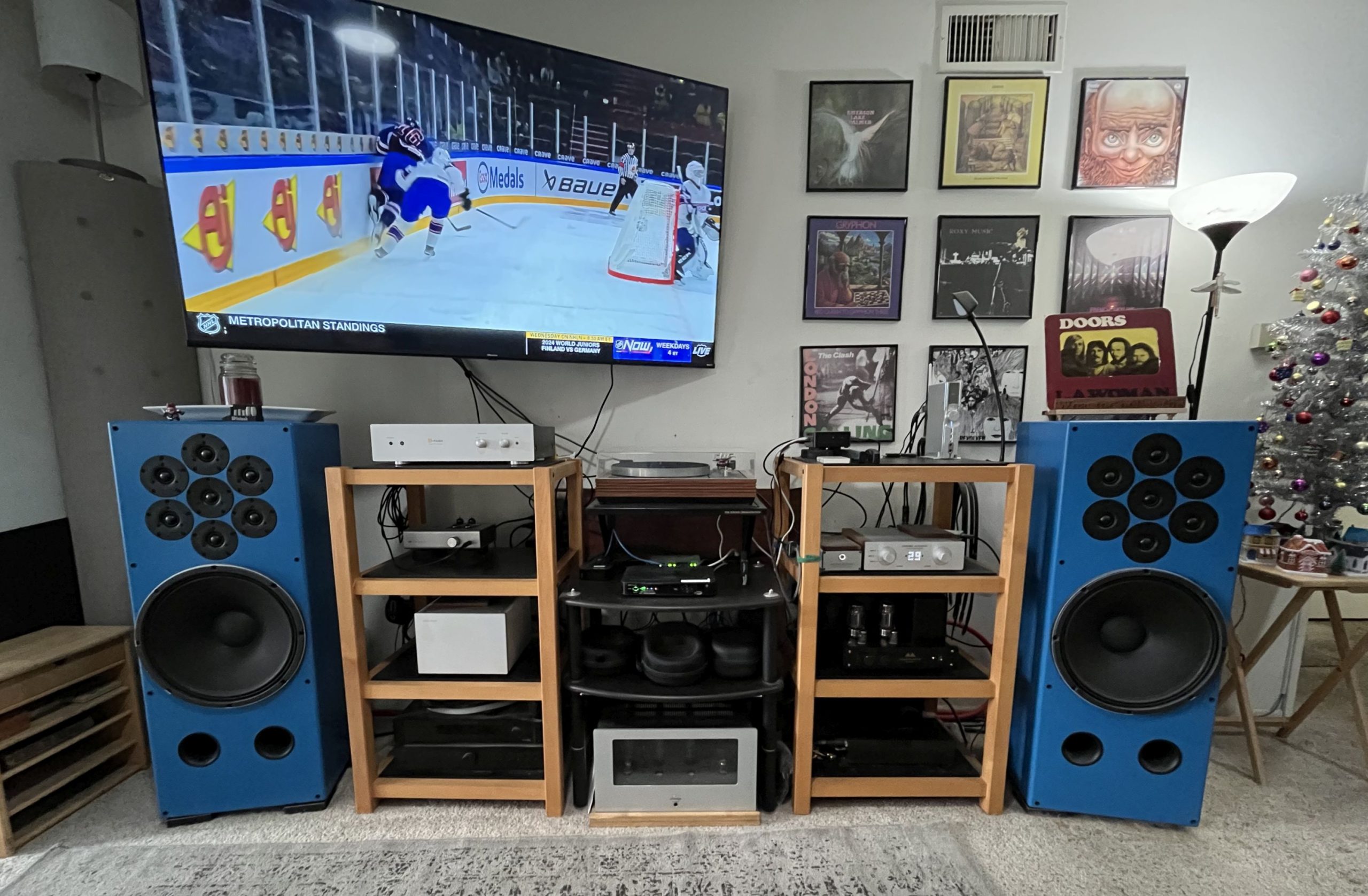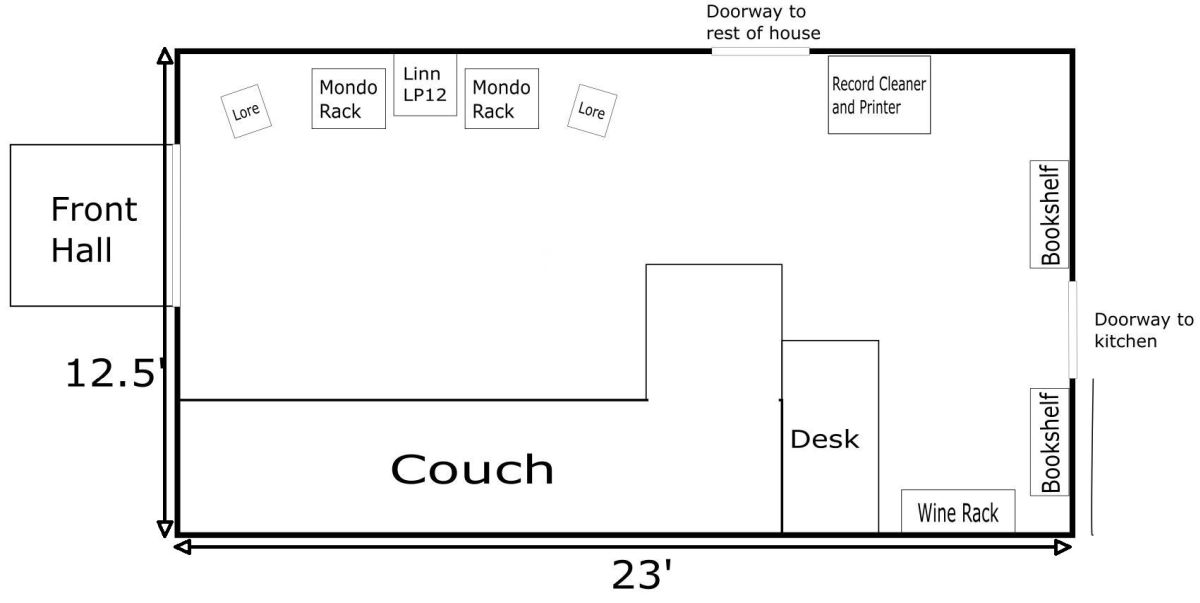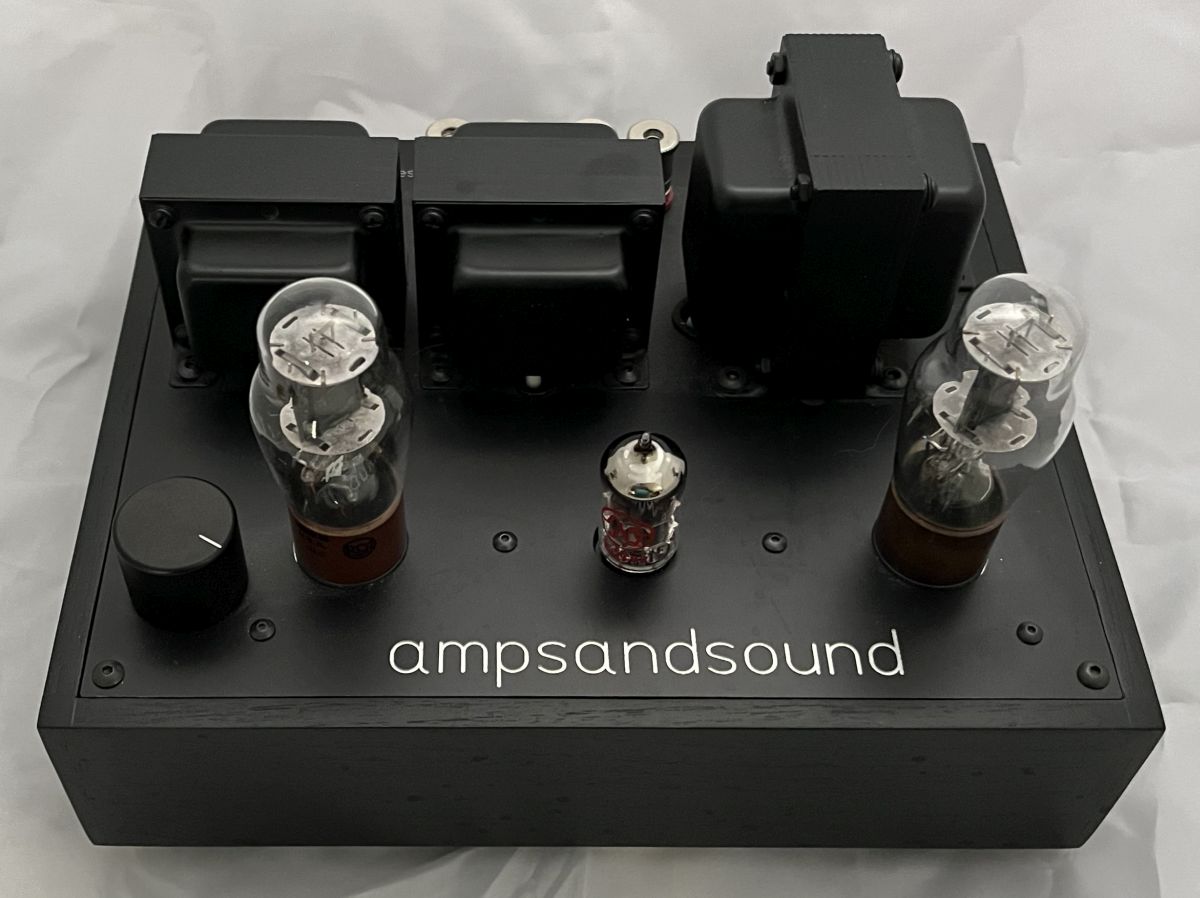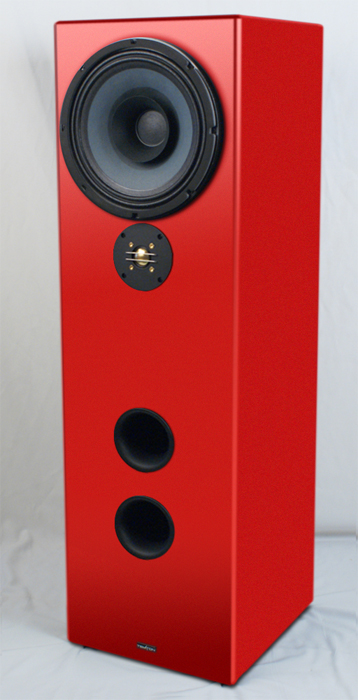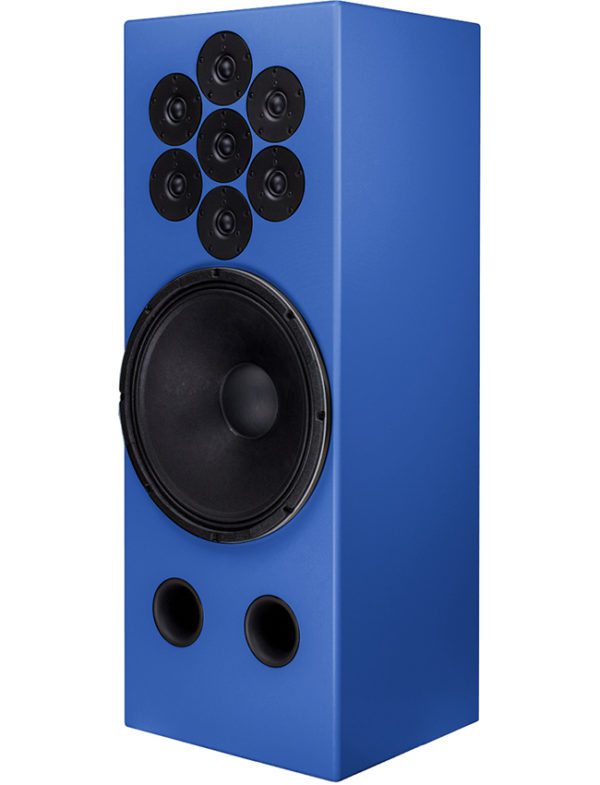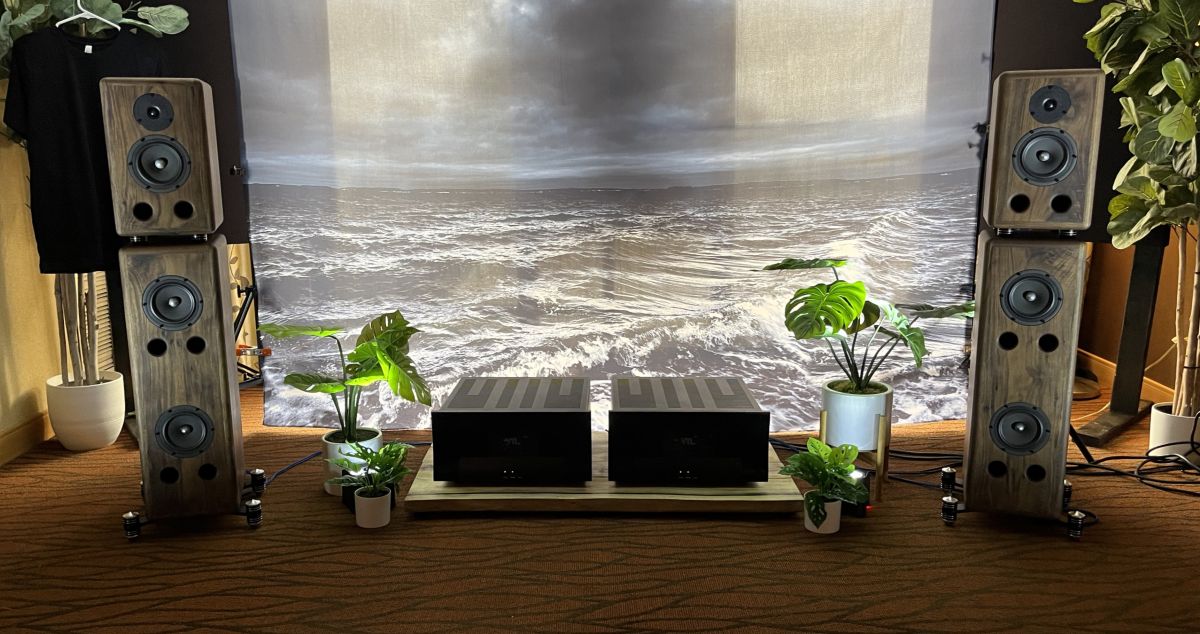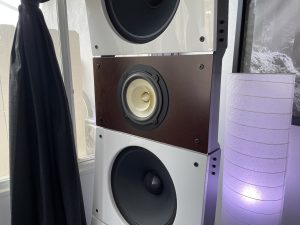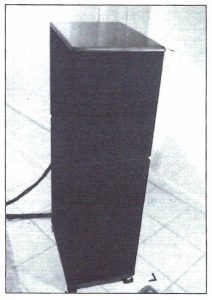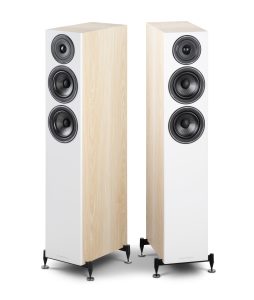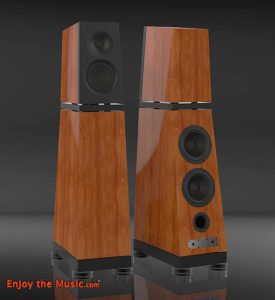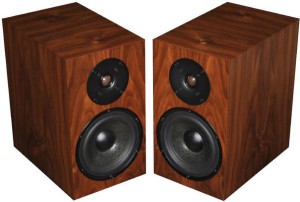One of the things I have learned to expect and appreciate in my search for high-value, lower-cost equipment is that as the price goes down the differences between gear increase, and the need to understand your biases and preferences becomes more important as you will have to accept certain compromises. As I have listened to and reviewed several speakers in the (approximately) $1000 range over the years, I have accepted what they can do, and have looked for speakers that excel at those characteristics I find more musically important (like tonality, dynamics, extended frequency response) even if it means other characteristics (like imaging or resolution) may be handled better elsewhere.
With that in mind, even though I have heard many fine offerings that I could honestly recommend, I have stuck with the Tekton Lore as my principle speaker since I first reviewed them way back in 2012 (HERE). The Lores still push all the right buttons for me and have never once left me feeling that I needed something better. I have had endless hours of enjoyment from them in my system.
When it came time to seek out equipment for my exhibit of High-Value/Low-Cost gear for the 2017 LA Audio Show, I knew that whatever other speakers I might have in the room, I would bring my own personal pair of Lores to play. I just felt that people needed to hear what they could do. In discussing the room with Eric Alexander of Tekton, we decided that since my pair were basic black and since I was asking other manufacturers to try to send gear that wasn't basic black (I simply preferred colors that would show up better in photographs), Eric decided to make a new pair for the room and painted them bright orange (although officially Harley-Davidson® orange, automotive finish, we jokingly referred to them as 'Cuse Orange since my son recently graduated from Syracuse University). They certainly stood out in that crowded room.
However, I also asked for a pair of more upscale speakers that would showcase his new patent, and that I could fit in a system in the $5000 to $6000 range. Though I felt they were a little too pricey for the room at $3000/pair, Eric wanted to send his new Double Impact speakers. After some discussion of the design and his sense of their capabilities, I decided that they would work in the room. So he built a pair painted in a nice light gray and shipped them to me. They literally arrived the day before we packed to leave for the hotel, so I hadn't even unpacked them before we got to the room.
I'll discuss our experiences with the speakers at the show in a little bit, but this review is based on my now having lived with the speakers at home for over six months. I've used them with a variety of electronics, sources (analog and digital), and cables. Though I feel I have a good handle on their capabilities, I will say that I feel this review is still a preliminary report, as I just don't feel I've yet gotten the best out of them, or all that they are capable of offering in my room.
The Double Impact is a large box of conventional design in that there are no complex cabinet architectures, non-parallel surfaces, or unique physical attributes. I initially thought it was the same cabinet as their Pendragon, though at 54"H x 12" W x 17.75" D they are almost two inches deeper than the lower-cost model. At 118 pounds each, they are also thirty pounds heavier per speaker. In any case, they are a large and heavy speaker. The fit and finish is very nice, similar to the beautifully finished new Lores I also received, and certainly an improvement over my six-year-old Lores. Those had a rather industrial look about them. Any way you look at them, the Double Impacts certainly seem like a lot of speaker for the money.
What makes them unique, however, is their driver complement and layout. The first thing you notice about them (provided their optional grill covers are not in place) is the seven-tweeter array that dominates the top section of the speaker. This array is part of the principal design that is described in their patent. For those who haven't read the details in the patent, or who don't understand how this array works, it might look like this speaker would have all sorts of sound quality issues due to interference, phase, combing, and lobing effects. However, if I understand it (and hear it) properly, this tweeter array doesn't suffer from any of those issues, mainly due to the face fact that it is not actually run as a seven-tweeter array.
Even though this system only has three different types of drivers—the seven tweeters, the two 6-inch mid-bass drivers, and the two 10-inch bass drivers (same as used in the Pendragon), it is a true four-way design. The way this works is that the six-tweeter hexagonal ring that surrounds the central tweeter is actually driven at fairly low frequencies to act as an ultra light upper midrange driver distributing the sound among all six outer tweeters. Only the central tweeter is driven to higher upper octave frequencies. The effect, at least according to Tekton's patent (you can read the actual patent HERE), is to allow for ultra quick and detailed midrange response that larger, heavier midrange drivers would not be capable of matching.
Across the internet, arm chair speaker pundits and home designers have had a field day trying to call the patent BS along with the design of the speaker (and other models in Tekton's lineup that use this driver array). I never get caught up in technical discussions, but leave that to the designers themselves. Tekton's Eric Alexander has proven over the last many years to be a designer of great talent, and though not everyone will like his house sound or the look of his designs, that doesn't impact or affect what they do or how they work. I spent my time listening with both an open mind and critical ears to see and hear how these worked, at least in my system.
My first experience with these speakers was, as I mentioned earlier, at the 2017 LA Audio Show. This was a tough setup as I was unfamiliar with the sound of the speakers or their setup requirements, plus I was in a hotel room that I had stepped into for the first time while the show crew was bringing all my gear in. Fortunately, I had the assistance of long time audio buddy and setup expert Russ Stratton helping out, as well as Pangea Audio's Steve Niemi, who also generously offered to help. Of all the electronics I had in the room, I had the most experience with the exceptionally fine sounding Heed Audio Elixir integrated amplifier ($1195), so we mostly used that to power the speakers while we worked on positioning. We figured that with the Double Impacts being the largest, most full-range speaker in the display, it would be best to position those first and then see where the smaller speakers would need to go.
LAAS 2017 - Set up time
Using a mix of digital and LP sources, we quickly determined that the substantial bass output of the speaker along with the dimensions of the room would pose substantial issues. In fact, at one point, playing the Flaming Lips LP Oczy Mlody, the bass in one track resonated with the back panel of a chest of drawers in the room so badly that the vibrations were almost as loud as the output of the speakers and some stuff sitting on the top of the chest literally vibrated themselves to the edge and fell off. We ended up stuffing all the bed pillows in the room behind the chest to tame the vibrations. We also positioned the speakers at an angle instead of straight down the room and tried to limit some of the low bass output into the room.
Over the three days of the show, it was easy to hear the potential for how good these might be, even if we never achieved that potential in the display. Experienced show-goers and audio journalists seemed to understand this and were very impressed. Attendees who just wanted to sound important on Internet discussion groups, not so much. I won't say they didn't hear what they heard, just that their attribution of what and why they heard what they heard was generally misplaced. That is always a hazard of exhibiting at a show.
After the show, getting the speakers set up at home in my own system allowed me to spend a substantial amount of time in getting positioning and room tuning figured out. From that experience, I'll say that many people who hear these, and even if they like how they sound, may not be hearing all that they are capable of. These proved to be the most time consuming speakers to position that I've ever had in one of my rooms. Even my old full range four panel Acoustat Monitors from the late 1970s, as beamy and directional (and fraught with dipole cancellation issues) were quicker to position and optimize than the Double Impacts. It wasn't until about four months into the review period that I felt I had them where I could leave them be. Yes, moving them in any direction as little as a ¼ or ½ inch made a difference. Toe-in angle was critical, distance from the wall behind them was super critical, and all totally room dependent, so telling you where they ended up in my room probably won't help you in your room.
The main issues are they need room to breathe, and with bass output into the low 20Hz range, you have to be careful about distance to the walls. But toe-in was also very important as these are very directional speakers. Eric suggested aiming them to a point about five feet behind the listening position and that really did work best. That posed a problem at the LA Audio Show, as anyone not sitting in a centerline seat, lost a substantial amount of the overall sound quality, and whoever had the hot seat (second row center) heard them at their best.
With all that said and done, how did these work in my system? What do I have to say about them?
It's odd how sometimes you hear something new in your system that ramps up the overall sound quality to a new level, in a way that it doesn't jump out at you and make you go WOW; but rather you sit there listening and it just hits you that things are simply sounding really good. I remember when I first fired up the Lores several years ago and instantly thought, "Wow, these are really great speakers…" and then had to delve into what made me react that way. But with the Double Impacts, it was more like "Hmm, I've been listening for several hours and don't really care about anything else. I just want to sit here and listen for a few hours more."
I don't know how or why I react the way I do to these speakers, but when I sit in the hot seat at home and play anything at all, I just feel good and don't want to do anything else. I don't focus on the sound or any artifact or character of the sound, but just get lost in the music. I've never had a speaker at home that had this effect on me quite so strongly.
I have never heard so much information being presented in my system before. Detail is amazing and I marvel at just how much information could be on a record (or in a file) that I wasn't really aware of before. They rival the best electrostatics I've heard in terms of the pure level of detail and resolution. They surpass by a large margin my previous reference for detail and resolution, the VMPS RM-2neo, whose ribbon midrange drivers were exceptional in their ability to dig out information from recordings that I simply couldn't hear in other speakers. This level of resolution makes it so easy to pick out individual instruments from a group and really hear what they are doing. Some of my long time favorite tracks to test this include the instrumental cut "Sailor's Tale" from King Crimson's much-underrated 1971 LP Islands. Even without the spatial separation from the beautifully produced LP, the dense overlay of guitar, Mellotron, and sax make this track a major challenge for any system. Only those systems that can really dig deep resolution-wise can resolve the mix into an experience that makes sense. I've never heard the different lines so clearly separated while maintaining a sense of a single musical whole.
Another example would be the live recording of the jazz/rock/fusion/avant-garde band Moraine (Metamorphic Rock standard CD, MoonJune Records MJR 040, ripped to FLAC on my server). This is complex music played with a fury and frenzy that could tax any system, yet through the Double Impacts, the combination of baritone sax, violin and electric guitar are so easy to differentiate and follow that you really do focus on the music and tend not to notice the sound. That's the way it should be.
The more complex the music you like, the better these speakers react to it.
But that is just the start. The Double Impacts handle pretty much every other aspect of what a speaker should do in an exemplary fashion. They are so tonally rich and natural sounding that you barely notice what they are doing. Play your favorite singers' well-recorded albums and listen to how natural the vocals are. I played a wide range of favorite vocalists from a variety of genres and all sounded simply superb. Jack Johnson, Johnny Cash, Julie London, the Roches, Frank Sinatra, Dean Martin and dozens of others, all just beautifully rendered, with exquisite tone and near lifelike presence. Cranking up the track "Pussy Strut" from The Waitresses' 1982 LP Wasn't Tomorrow Wonderful was in fact truly wonderful in how clear and powerful lead singer Patty Donahue's voice soared over the crunchy guitar and sax playing behind her.
And when I refer to behind her, I do mean to discuss the imaging characteristics of these speakers. Set these speakers up carefully and give them enough room, and they will create an incredibly large, deep, soundstage that will fill your room and place within that soundstage images as clear and precise an any speaker I have ever heard, and certainly better than most. Yet there is no sense of over-precise or unnatural localization in this image. There is size, scale, atmosphere, and a real sense of the space in the room. The integration of all those drivers (remember, there are eleven drive units in each speaker) and the sheer size of the speakers becomes irrelevant with no sense of sound coming directly from the cabinet itself, provided the recording was produced well enough.
In fact, one real benefit of the resolution, clarity, and imaging characteristics of the Double Impact was surprisingly not music related at all. Since my listening room is currently also our living room (the first time I've ever had to do that) there is a flat screen TV on the wall between the speakers. I don't worry about home theater and simply run a Toslink cable from the TV to the appropriate input on my DAC. It does make watching movies more fun and yes, I admit I am addicted to the TV show The Voice, though I hate all the other singing/performance competition shows. Hearing the performances from that show over the system just makes it that much more fun. Well, the clarity and imaging precision of the Double Impacts negates any need for a center channel speaker. Even in a scene where there might be multiple people talking over lots of background noise, each and every voice is completely clear and easy to understand.
Bass response on these should be expected to be deep and powerful based on the large size of the cabinets and the four ten inch woofers, but it also has to be looked at in conjunction with the room you are using them in. As I mentioned previously, my initial setup at the LA Audio Show produced bass that overwhelmed the room and reacted adversely with the furniture there. We had to work to tone the bass down some in that room. In my listening room, I have the opposite issue. Due to the dimensions of my room, and available distance from the wall behind the speakers, though I get clear accurate bass down to the low 20s, I don't get the power or impact I know they are capable of producing. There is a room induced drop out narrowly centered between 63 and 80 Hz. No other speaker in my collection has the depth and power in the bottom two octaves to make this all that noticeable. I know they are capable of more in that range, as I have brought this set to two other people's houses to try in their systems.
In the first trip I took them to friend Russ Stratton's house where we swapped the Double Impacts in place of his custom made Zu Audio speakers. Russ's system is, to my ears, one of the best sounding and most fun to listen to systems I've heard. This isn't going to be a comparison of the Double Impacts versus the Zu, but a chance for me to check on how well they played in his room, which is seemingly not too big, but in reality due to how it opens into the next room, is about three times the volume of my room. Powered by either my 100/wpc Jolida JD1000P or Russ's 20/wpc First Watt F7, the sound was very different from that which I was getting in my room. All the positive aspects of what I've described were there, but even better, and the bass response was deep, strong, and powerful in a manner I simply can't achieve in my room. Russ has five subwoofers in his system, but we left them out and felt no need for any of them when playing tracks specifically to test (and stress) the bass capability of the speakers. How I wish I had that room (and his E.A.R. 868 preamplifier). Any concerns I had about the overall power and impact these speakers could be capable of were totally dispelled. Bass response was simply superb, as was the speaker's ability to really load the room with a deep visceral impact. The soundstage was massive, especially in terms of depth, and had not just a sense of localization, size, scale and volume, but also of weight, if that makes sense. Images didn't just sound solid, they felt solid.
Road Trip Two was to take them to fellow PF contributor Victor Chavira's house (whose commentary on the Double Impact can be found HERE). I have a deal with my wife that from Thanksgiving to New Years I set up a physically small system so she has room to set up a Christmas tree. Rather than put them in the garage or in storage, I set them up at Victor's in place of his KEF LS-50s (not including the subwoofer he normally uses) and only spent an hour or so helping set them up and playing a variety of tracks to make everything sounded right. Although Victor's room isn't any bigger than mine, its layout seemed better suited to the speakers than my room.
And I was right. Connected to his Bel Canto C7R integrated amplifier, there was the same tonal neutrality, extended frequency range, ease of sound with exquisite detail I had come to expect. Once again, it became more about "hey, have you heard this…" as we jumped from track to track in his collection. But it struck me just how overall satisfying these speakers were. The midbass lack of power I was hearing at home was not at all present here. Bass guitar just had the right tone, bite, clarity and impact needed to sound right.
What was consistent in all three locations (Russ's, Victor's, and my room) was the wonderful, natural tonal balance, transparency, and resolution.
Back home with them, I was struck by an odd sensation. When I listen to the smaller, lower priced Lores, I am always aware of just how dynamic they sound. Everything jumps out at me, and I really notice how these are more expressive and dynamic than other similarly priced speakers I've tried. Yet, even though the Double Impacts are actually even more expressive and dynamic than the Lores, I don't really focus on it so much, as it sounds so natural. It might be that with the Lores, as good as they are, they are compromised in other areas, so maybe their dynamics stand out more? The Double Impacts do everything better than the Lores, so maybe I just don't notice any single attribute quite so much? I'm still working on that one.
LAAS 2017 - Tekton Lore, Tekton Double Impact, ELAC Debut F5, Magnepolaner .7, for size comparison
One test I do with every change in my system is to set my server to shuffle and just listen for a while. Sometimes these days I do it with Artist Radio on Tidal. I see how long I can go without losing interest. When everything is working well, I can go quite a long time, maybe an hour or two, before I feel the need to step in and actually pick something specific to listen to. I spent a day doing this with the Double Impacts, driven by the $699 ELAC EA101EQ-G integrated amplifier, and actually went almost seven hours before I needed to change things up. I have about 12,000 tracks on my server, many I haven't heard in more than fours years, and the whole time I was totally caught up in listening to the music, wondering why I hadn't listened to something recently and really staying focused the entire time.
That's the ticket.
Regarding amplifiers to match up with the Double Impacts, I will say they are on the one hand, very easy to drive. At Russ's they totally rocked with his First Watt F7 and that is probably the best amplifier I've heard with these speakers. If I had an extra $3000 I would be buying one right now. They sounded a little looser and tubier with the Jolida JD1000P and ever so slightly less transparent, but otherwise were extremely satisfying. They were crystal clear and ever so transparent with my Burson Timekeeper Virtuoso, which was the amplifier I used the most at home. But then I ran them quite a bit alternating between three low-cost integrated amplifiers that will be featured in a review soon; the Emotiva TA-100 ($399), the Music Hall a15.3 ($549), and the aforementioned ELAC ($699). All three, though different, were surprisingly good with these speakers. The Double Impacts pose an easy enough load to not stress out a lower-cost amplifier like any of these. Yes, the amplifiers from First Watt, Jolida and Burson were better, more detailed, more dynamic, more tonally complete and would be considered worthwhile upgrades. However, the three lower-cost amplifiers all managed to sound really good and totally usable with these speakers. Good enough, in fact, that I could actually recommend these speakers with one of these amplifiers and letting the listener decide later if they felt a need to upgrade or not.
I have always been a firm believer in the idea of setting a system up "source first" and keeping the best upstream, always feeding a "better" signal into an equal or lower performing piece as it went downstream. The idea being you don't want a one step in the system to reveal the limits and flaws in a previous step. I've heard many speakers that ruthlessly reveal any inherent limitations in upstream components to where an inadequate amplifier will just not sound good playing into them. Yet, the Double Impacts seem to allow every amplifier I tried (with the odd exception of my trusty old Antique Sounds Labs MG-SI15DT-S) to work to their best ability. This would be a great speaker to set up a moderately priced system where you could be happy for years, but where you would still reap real rewards with an amplifier upgrade at a future date. They don't mask, obscure or hide flaws in upstream components, but simply seem to be an easy enough load that the amplifier that is driving them doesn't have to struggle and can operate to it full potential.
One other thing that does improve with a better quality amplifier, is that sense of effortlessness that I've only ever experienced from the best products I've heard. I take it as a hallmark of real high-end sound versus just good quality Hi-Fi. Whether you are listening to a singer with their guitar, a hundred-piece orchestra, a rock band with their amps at eleven, or Anner Bylsma playing Bach's Solo Cello Suites, the Double Impacts continue to just disappear and get to the heart and soul of what's in the recording. Music flows out into the room in a totally captivating way that just keeps you pinned to your seat caught up in the moment and anticipating what might come next. They are downright addicting.
And although their high 98dB rating does imply they'll mate up well with low powered amplifiers (and they do), they also have very high power handling capability (400 watts) and will play extremely cleanly and without any objection at outputs way higher than I would ever care to listen. Using the 100/wpc Burson amplifier, a calibrated iOS microphone, and Studio Six's Audiotools app on my iPhone, I briefly sustained levels well over 100dB in my room playing The Who's Live At Leeds (FLAC, CD rip). Other than simply being too loud for comfortable listening and obviously overloading the room, it was remarkably clean and seemingly distortion free. Just not something I would do again.
Have I heard better? Not in my system, or in my home. I have heard other people's systems that sounded better, but those systems were more expensive by substantial amounts of money and in much larger rooms. I would love to take another road trip with these to drop them in some of these very expensive systems to see how they hold up compared to speakers well into the five-figure price range. I'll have to talk to some of the LA/Orange County Audio Society members to see if anyone is interested.
But for me, in the here and now, and staying with my outlook as the high-value/low-cost guy on the PF staff, I'll have to say these are my new references. I expect anything short of a winning lotto ticket they will remain that for a long time. They are a stunning achievement in speaker design.
Double Impact Loudspeakers
Retail: $3000/pair
Tekton Design
Specifications
- Made under U.S. Patent 9247339
- 98.82dB 2.83V@1m sensitivity
- 4 Ohm design for optimum performance - 8 Ohm Double Impact available for $3475)
- 20Hz-30kHz frequency response
- Ultra-linear frequency response with ±1dB deviation from 70Hz-20kHz
- 400 Watt power handling
- Height 54"(137.16cm) x Width 12"(30.48cm) x Depth 17.75"(45.085cm)
- Weight 118 lbs.
- Manufactured in the USA




